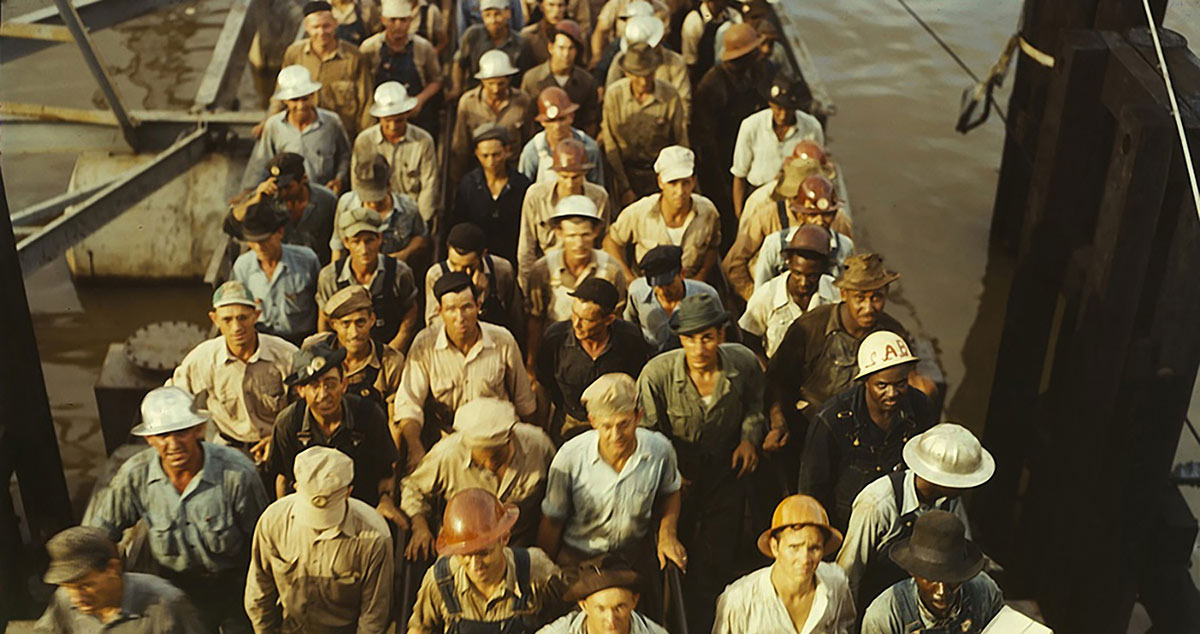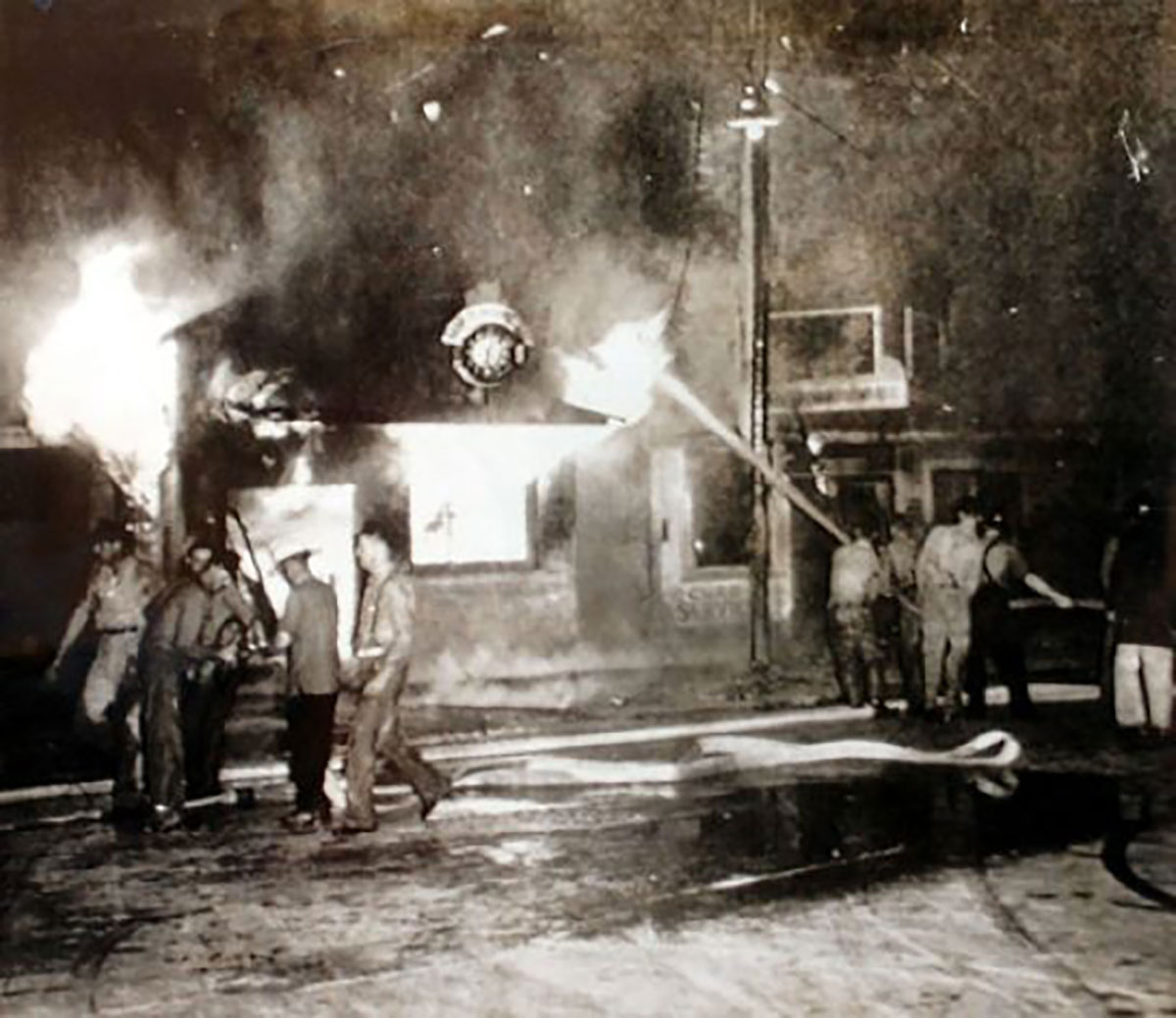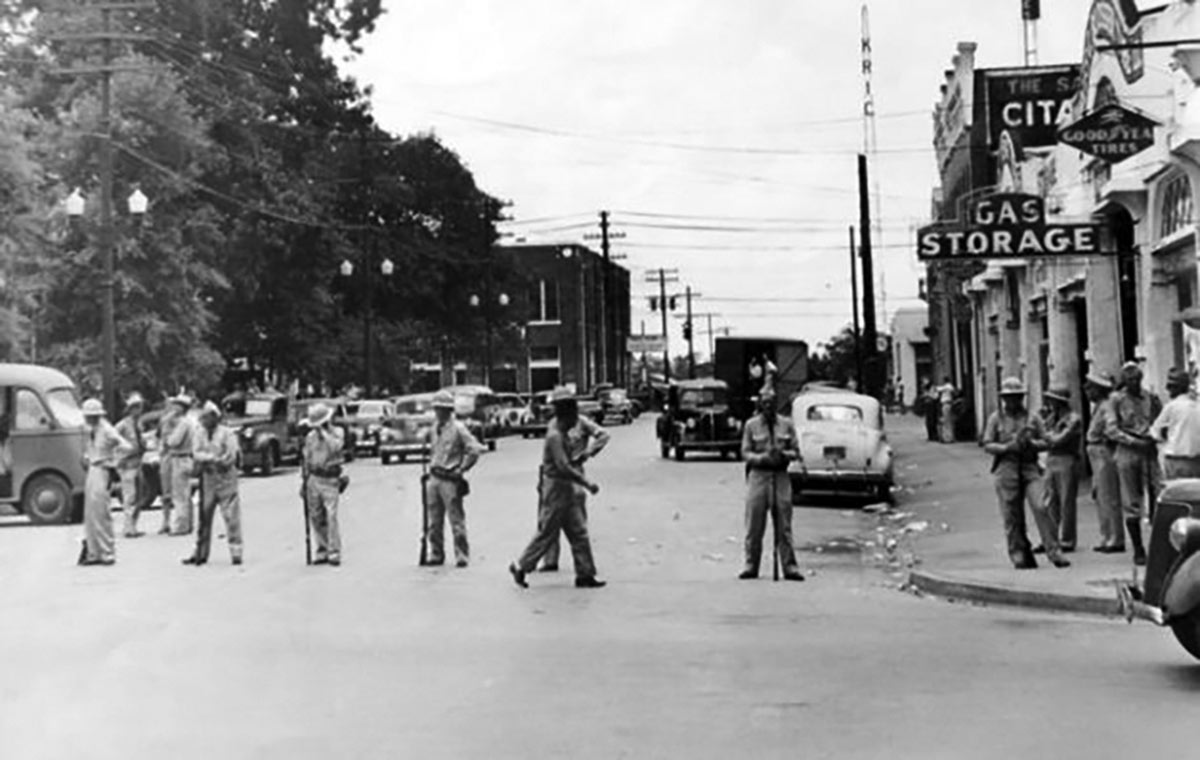
Workers line up for a shift at Beaumont’s Pennsylvania Shipyard. The jobs created by WWII led to overcrowding and rationing which incited the June 15, 1943 race riot.
By Courtesy photo
As World War II raged, tensions between Beaumont’s Black and white community were high. On June 15, 1943, these tensions boiled over and Beaumont was the site of a race riot.
War had brought jobs to Beaumont, as the Pennsylvania shipyard helped the war effort, but the new jobs saw an influx of people from all demographics seeking work which meant housing and food were in short supply.
Beaumont historian Judy Linsley said one cause of the riot was overcrowding, and particularly as it was in the days of extreme Jim Crow laws.
“There were many whites who had never been physically near any Black people,” she said. “They might have come from rural areas, where there was just a real segregation, and while workers were pretty much segregated in the Pennsylvania shipyards, as much as they could, they were still in proximity.”
Linsley said housing in Beaumont was totally inadequate for the sudden influx of people.
“A lot of people were in jammed in houses with families, and a lot of them had to come in from out of town every day, and they were just thrown together in a way they never had been before,” she said. “There was a lot of tension, even in the year before the race riot. They had some problems with city bus lines, because in those days there was a sign that the African Americans had to sit or stand behind — they were the at the back of the bus, and with the crowding, with everybody riding the bus, sometimes that didn’t work, and they had to stand ahead of the sign in the aisle.”
There were several incidents before the race riot actually started, Linsley said, which reflected the overcrowding and general frustration. There was a lot of really deep prejudice on the part of the whites, she said.
While there wasn’t a lack of wages, everything was rationed, Linsley said.
“So, people had a lot of money but had nothing they could spend it on, because gas was rationed,” she said. “You couldn’t buy cars. You couldn’t even buy new tires. There were a lot of goods that were unavailable because they came from countries we were at war with, or the ships couldn’t get through with them.
“All people could do was work and go home and be frustrated. Add that to some really, really deep, long standing racial prejudice on the part of the whites and it was bound to reach a boiling point.
On June 15, 1943, a young white woman accused a Black man of raping her. Although she was unable to identify the man, 4,000 angry white men and women paraded to Beaumont’s City Hall carrying bats, guns, axes and Molotov cocktails, James S. Olson of the Texas State Historical Association Small writes.
The mob dispersed to the Black areas of Beaumont which included Forsythe, Gladys, Buford and Irving streets. The Black residents were attacked, and many Black businesses were destroyed, with 100 homes ransacked and burned.
Three Black men were killed along with one white man. 50 men were injured and more than 200 were arrested.
During the riot, Mayor George Gary sought assistance from Texas Governor A.M. Akin Jr., who declared Beaumont under martial law and initiated an 8:30 p.m. curfew. He also dispatched 1,800 Texas guardsmen, 100 state police and 75 Texas Rangers to the city.
Beaumont was closed off and no one was allowed in or out of the city. All public gatherings, including the annual Juneteenth celebration were canceled. Black workers were not allowed to go to work. Parks and playgrounds were closed, and bus services were forced to seize operations until June 20.
While housing and rationing were certainly contributing factors, Linsley said the main reason for the riot was that whites were accustomed to segregation and when they had to deal with the lack of it, they really couldn’t handle it.
“I think that the prejudice was at the root of it, and then the other problems maybe triggered it,” she said.
Linsley said we must learn the lessons of the past and try hard to keep them from happening again, whatever the causes are.
“One of the ways to prevent violence between people is for them to learn to understand each other, rather than look at each other with suspicion and hatred,” she said. “We’re all humans, and with that as the basis of the conversation, then we should be able to work things so that they’re not violent.
“The Laws of the day really were so repressive as far as what they would not allow Black citizens to do. White people just thought they were never going to have to associate with the Black people. And then they did, but there was no preparation. They didn’t want to try to understand. They had been brought up to hate the Black citizens or to be scared of them.
“I think the basis for trying to keep any situation from going into violence is to try to understand, to create understanding and communication between ethnic groups.”



